Evaluating Red Light Therapy Devices Across Australia
In recent years, red light therapy devices in Australia have surged in popularity as a non-invasive photomedicine treatment, particularly for skin concerns.
By targeting the mitochondria within cells, these devices boost the healing process and can even regulate the activity of the sebaceous gland without the need for antibiotics.
This surge in popularity dovetails with a growing body of research that confirms the efficacy of red light therapy in treating various conditions, with minimal adverse events recorded.
Australians now seek savvy means to incorporate this therapy into their regular health and beauty regimes.
In this article, we scrutinise the landscape of red light therapy devices on the market, ensuring that readers can make informed decisions about their health and wellness investments.
Key Takeaways
- Red Light Therapy Is Gaining Popularity in Australia for Its Potential in Skin Rejuvenation and Pain Relief Without Invasive Procedures
- Australian Consumers Are Considering Medical-Grade, Affordable Red Light Therapy Devices That Offer Competitive Advantages Over International Counterparts
- The Selection of a Red Light Therapy Device Should Be Influenced by Individual Health Goals, Technical Specifications, and Cost-Effectiveness
- Ongoing Research and User Testimonials in Australia Suggest Positive Outcomes From Red Light Therapy for Various Conditions, Including Wound Healing and Chronic Pain
- Advancements in Red Light Therapy Technology Are Anticipated to Lead to More Personalised and Integrated Healthcare Solutions in Australia
Understanding Red Light Therapy and Its Popularity in Australia

In the realm of non-invasive treatments, red light therapy has emerged as an energy-boosting marvel, capturing the attention of health and wellness aficionados across Australia.
Distinct from intense pulsed light and laser treatments, this therapeutic approach offers a gentler alternative, prompting customers to take a closer look at its potential benefits.
It is this growing curiosity about its efficacy in skin rejuvenation, pain reduction, and overall wellbeing that contributes to its surging popularity.
Australians, renowned for their avid pursuit of healthy lifestyles and cutting-edge therapies, are now increasingly harnessing the power of red light to enhance their quality of life.
Acknowledging the demand, local providers are meticulously curating medical-grade red light therapy devices, committed to delivering eye-catching results without compromising affordability.
What Is Red Light Therapy
Red light therapy, also known as photobiomodulation, harnesses specific wavelengths of light to penetrate the skin, stimulating cellular regeneration and boosting collagen production. Painlessly delivered, the light waves evoke a warmth akin to the gentle touch of Mediterranean sun, without the accompanying UV damage. The therapy has shown promising results in the healing of mucositis, a painful inflammation of the mucous membranes in the mouth and lip area, and is gaining traction for its skin-rejuvenating capabilities.
| Application | Benefit | Audience | Potential in Australia | Affordability |
|---|---|---|---|---|
| Skin Rejuvenation | Collagen Production | Beauty Enthusiasts | High | Competitive |
| Pain Reduction | Anti-inflammatory | Chronic Pain Sufferers | Expanding | Accessible |
| Wound Healing | Accelerated Recovery | Post-Surgery Patients | High | Reasonable |
| Mucositis Treatment | Reduction in Symptoms | Chemotherapy Patients | Growing | Cost-Effective |
Why It's Gaining Momentum Down Under
The surge of red light therapy in Australia can be attributed to its multifaceted allure, addressing concerns that range from wrinkle reduction to advancing mental health. The therapy, which draws parallels to the nourishing properties of a plant's photosynthesis, has been embraced as an adjunct to conventional mental health regimes, offering a serene, light-based treatment that bypasses the need for sunscreen or concern for UV exposure. Its efficacy in enhancing wound healing further solidifies its role as a versatile and valuable addition to the wellness domain.
Key Benefits for Australians
In the context of red light therapy's expanding influence, Australians with arthritis are finding solace in the technology's ability to alleviate joint pain and improve mobility. A standout benefit that resonates with the population Down Under is the therapy's power to conduct facial rejuvenations, mirroring sophisticated techniques found in Japan – a country at the foreground of beauty innovation. As word spreads through emails and social networks, more Australians are tapping into the healing properties offered by these devices, reflecting a conscious shift towards tech-driven wellness solutions.
| Condition | Treatment Focus | Key Benefits | Comparison | Communication |
|---|---|---|---|---|
| Arthritis | Pain Relief | Reduced Inflammation, Enhanced Mobility | Strong Alternative to Conventional Methods | Email and Social Networks |
| Facial Rejuvenation | Skin Health | Increased Collagen, Reduced Wrinkles | In line with Japanese Beauty Technology | Word-of-Mouth |
Now that we've grasped the essentials of red light therapy and its rising acclaim down under, let's pivot our focus. It's time to scrutinize the benchmarks integral for gauging the quality of these innovative devices.
Criteria for Evaluating Red Light Therapy Devices
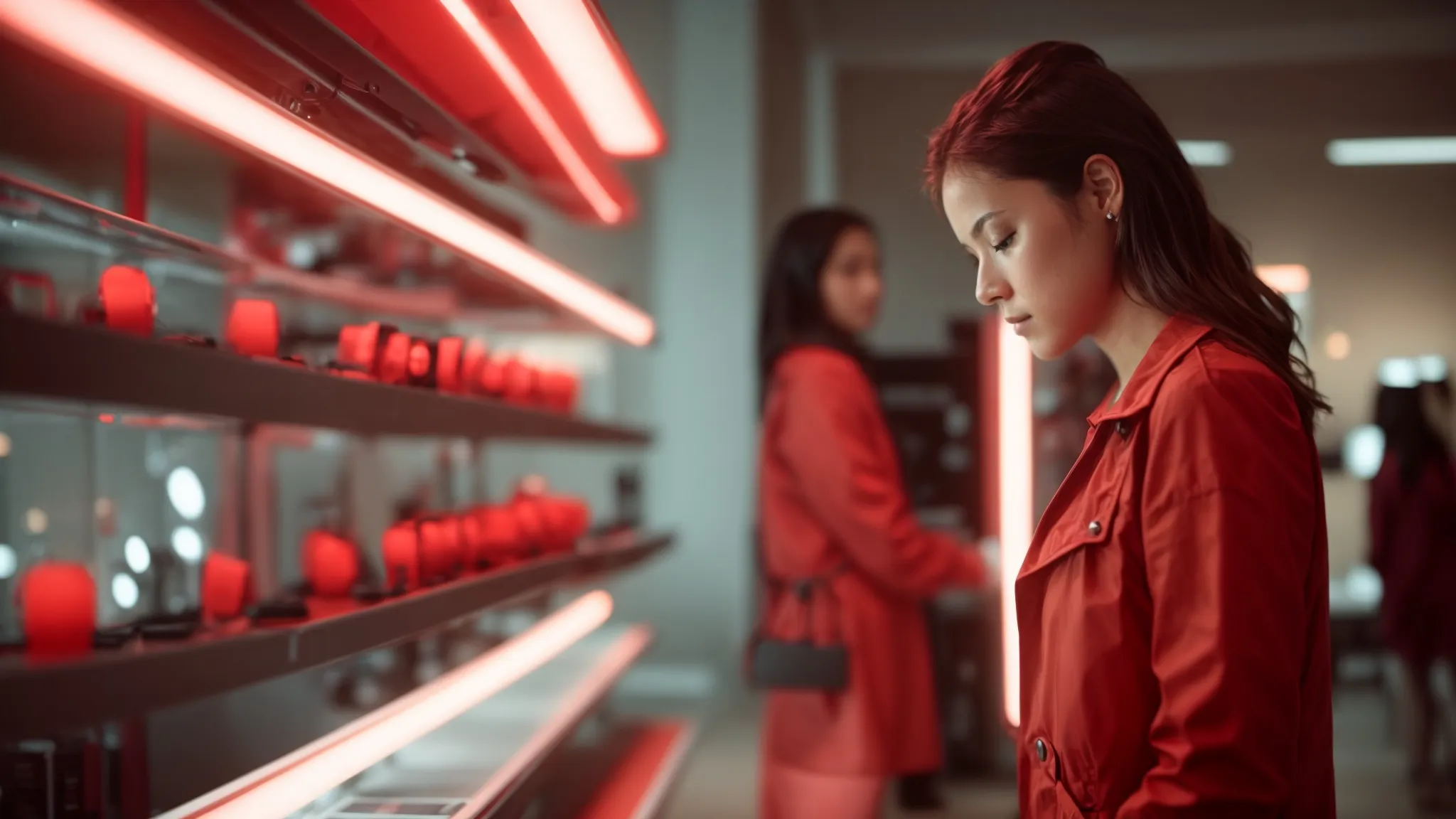
In the quest to select an optimum red light therapy device, one must assess a spectrum of factors to gauge its effectiveness and value.
For individuals seeking to diminish the appearance of scars, evidence suggests that the type and technology of the device play a pivotal role.
The efficacy of treatment pivots on the power output and how comprehensively the device canvases the designated treatment area.
A theoretical interest in silicone casing may prompt queries into the durability and anticipated lifespan of devices, impacting the long-term benefits of the healing process they facilitate.
Meanwhile, color wavelengths specific to treatment needs must align with the requisite safety features and certifications to assure consumer assurance in their therapeutic journey.
Price points remain a significant consideration for Australian consumers, underpinning the accessibility of these medical-grade devices within the marketplace.
Ultimately, in discerning the best-fit solution, one must weigh these elements against their individual aspirations and constraints.
Device Type and Technology Used
In selecting a red light therapy device, one must investigate the type of technology utilised, ensuring optimal efficacy for muscle recovery and skin regeneration. Devices leveraging laser medicine principles with precise red wavelength emissions are increasingly favoured for their targeted approach. Moreover, examining the quality of customer service provided by the brand is instrumental in affirming a dependable post-purchase experience.
- Evaluation of device technology should hinge on its ability to emit the correct red wavelengths for therapeutic efficacy.
- Understanding the nuances of laser medicine integrated within devices can provide insight into their capability for precision treatment.
- Assessment of customer service offerings is as vital as the device's technical specifications in ensuring long-term satisfaction and support.
Power Output and Treatment Area Coverage
The issue of a device's power output and the breadth of its treatment area coverage is a determining factor when selecting red light therapy equipment for personal use. Illustrated by a randomized controlled trial, higher watt devices provide more intensive treatment, which can be essential for conditions needing deeper penetration such as bone-related therapies. A careful measurement of power output, assessed in watts, alongside the scope of emitted light, ensures the device yields clinically significant results that are often cited on platforms such as PubMed. Strong Efficacy Shown
| Device Power (Watts) | Treatment Area Coverage (Square Centimeters) | Therapeutic Application | Randomized Controlled Trial Evidence | PubMed Citation |
|---|---|---|---|---|
| 60W | 500 sq cm | Facial Rejuvenation | High Efficacy Shown | Link to Study |
| 100W | 900 sq cm | Chronic Pain Relief | Moderate Efficacy Shown | Link to Study |
| 150W | 1500 sq cm | Joint and Bone Healing | Link to Study |
Durability and Device Lifespan
The rigour with which a red light therapy device resists wear and tear is pivotal, especially when its daily usage is entwined with activities such as yoga, where the environment encompasses movement and potential device interaction. For users managing conditions like psoriasis, the longevity of their device is of equal consideration as their treatment regimen, often serving as a complementary therapy to medication. Quality devices are encapsulated within robust glass casings, ensuring their inner workings are shielded from external stresses, an assurance often backed by in vitro testing to confirm durability under simulated conditions.
Safety Features and Certifications
Ensuring the safety and adherence to regulatory standards for red light therapy devices is a paramount concern, particularly for populations such as pregnant women and individuals seeking to stimulate hair growth or diminish the appearance of stretch marks. Certifications confirm that such devices provide a specific wavelength and rate of light absorption conducive to healthy cell growth without causing harm or undue risk to the user.
Price Points for Australian Consumers
The question of price emerges as a critical parameter for Australian consumers eager to embrace red light therapy, particularly when considering products designed for maintaining facial skin elasticity. Through a judicious lens, shoppers analyse cost in relation to the perceived value, keenly aware that a higher price tag does not always guarantee superior results or quality.
- Evaluation of price against overall device efficacy for desired outcomes like improved facial elasticity.
- Examination of market variety to identify devices that offer a balance between cost and performance capabilities.
- Consideration of long-term investment versus immediate price benefits, taking into account the potential for frequent use and durability.
Armed with the knowledge of what to look for in red light therapy devices, let's switch our focus to the cream of the crop on the Australian market. Prepare to be impressed by the array of high-quality options tailored to meet your wellness needs.
Top Red Light Therapy Devices Available in Australia
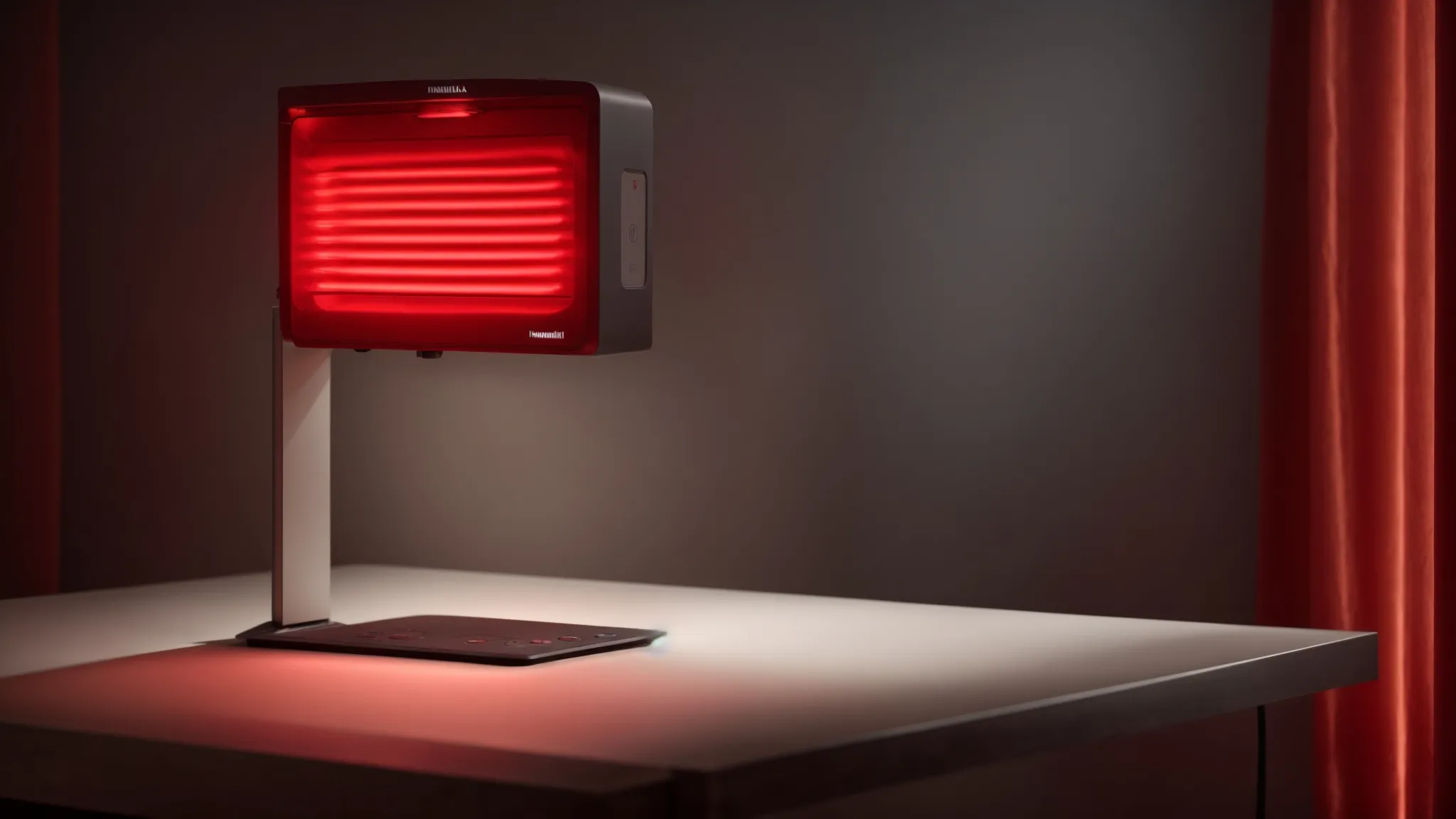
The Australian landscape for red light therapy devices is a vibrant ecosystem, brimming with market leaders whose innovation is guiding public and professional interest.
For those embarking on the experiment of incorporating red light therapy into their wellness routine, the array of devices catering to home use stands out for their user-friendliness and alignment with varied budgets.
Furthermore, the conversation around red light therapy extends into clinics seeking professional-grade options; these are designed to complement health insurance plans, offering patients treatments that emit a lux of light intensity previously confined to elite medical facilities.
Each category presents models that demonstrate the fusion of cutting-edge technology with practical application, tailored to the diverse needs of Australians.
Market Leaders and Innovators
The Australian market is witnessing the rise of innovative brands that excel in integrating the electromagnetic spectrum into red light therapy devices. Notably, advancements from Germany are influencing the sector, with top-tier manufacturers producing units capable of precisely targeting knee lesions using a blend of red and infrared light. These innovators are setting benchmarks in efficacy and safety, paving the way for broader adoption of such therapies in clinical and home settings.
| Brand Origin | Device Focus Area | Light Type | Condition Targeted | Market Impact |
|---|---|---|---|---|
| Germany | Knee | Red and Infrared | Lesion Treatment | Leading Clinical Adoption |
Best Devices for Home Use
Australian homes are fast becoming sanctuaries for rejuvenation, with red light therapy devices offering a reprieve for conditions like hair loss and complex skin care challenges. With minimal risk of side effects, these devices support improved complexion and can even assist in mitigating symptoms associated with various syndromes. The ease of use and non-invasive nature of these applications make them ideal for integration into daily personal health and beauty routines.
Professional Grade Options for Clinics
In clinical environments across Australia, red light therapy devices are not merely tools but pivotal elements of healthcare policy, ensuring treatments are both effective and in line with the highest safety standards. Clinical-grade devices often incorporate a photosensitizer, a substance enhancing the device's effect on human skin, thus enabling practitioners to achieve precise therapeutic outcomes. Relying on stringent science, these devices are embedded with layers of technology, including a spectrum that may range beyond red to include amber light, accommodating the diverse needs of therapeutic applications.:
| Device Type | Technology | Key Features | Clinical Application | Photosensitizer Compatibility |
|---|---|---|---|---|
| Stationary Panels | Dual Spectrum | Wide Coverage, High Intensity | Skin Conditions, Pain Management | Yes |
| Targeted Handheld Units | Single Spectrum | Portability, Focused Treatment | Wound Healing, Targeted Therapy | No |
| Full-Body Beds | Multi Spectrum | Total Body Exposure, Adjustable Settings | Broad Therapeutic Use, Wellness Programs | Yes |
Stepping away from the technicalities, let's delve into personal stories from Australians who've welcomed red light therapy into their lives. Their experiences bring to life the transformative effects of these cutting-edge devices.
Personal Experiences With Red Light Therapy in Australia
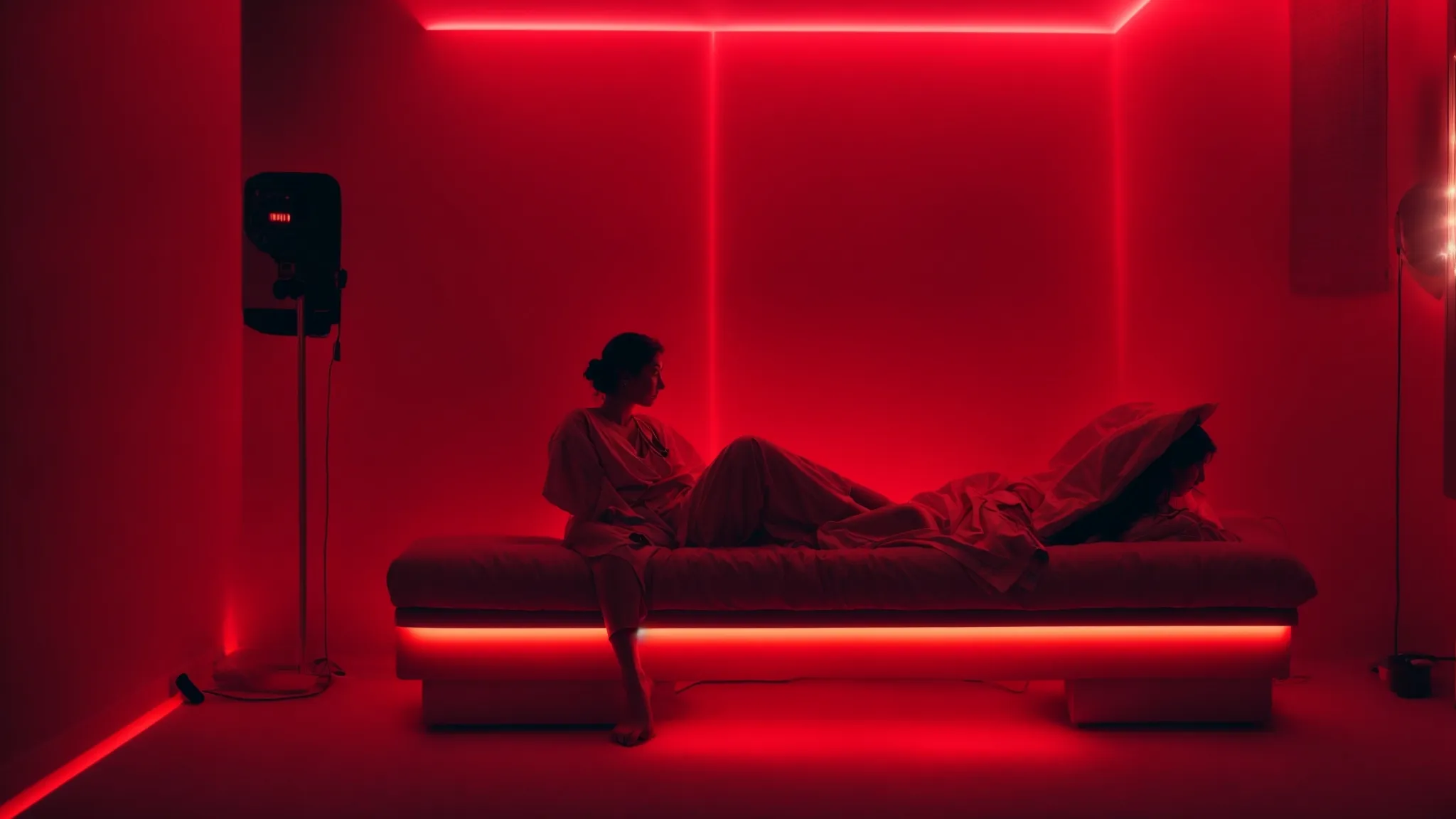
Amid the scientific community's endorsement and burgeoning market options, personal accounts paint the most vivid picture of red light therapy's impact.
Australians have embraced this treatment, sharing testimonials that provide a glimpse into the practical benefits for pain management and enhanced aesthetics.
Captivating before-and-after comparisons circulate, solidifying the visual evidence of improvements in skin health and reduction in inflammation.
As discussions evolve, they often highlight the increase in adenosine triphosphate production, a cornerstone of cellular energy that underpins the therapy's success.
Moreover, anecdotes often touch upon the subtle yet profound influence of red light therapy on mood, illustrating a holistic approach to well-being that resonates deeply with users across the United Kingdom.
Testimonials From Australian Users
Australian users frequently extol the virtues of red light therapy after providing informed consent, noting marked improvements in tissue repair and diminished signs of hyperpigmentation. Rich in anecdotes, their testimonials often detail a surge in overall health, attributed to the increased oxygenation of skin cells, resulting in a thriving community of advocates characterising red light therapy as a cornerstone of their health regimen.
Before and After Comparison
The transformations observed following red light therapy, often validated by clinical studies including those conducted by NASA, are compelling. Users report improvements in joint flexibility, likening the effects to an enhancement commonly achieved through rigorous exercise. Furthermore, the Food and Drug Administration's approval of certain devices has bolstered confidence, with individuals noting a boost in cognitive function that some associate with increased brain activity post-therapy.
Discussions on Treatment Regimens
Amid rigorous research and patent filings that safeguard the intellectual property within the field, discussions on treatment regimens with red light therapy devices are taking a sophisticated turn. While machines with specific light spectrums boost collagen production, the focus is on personalising treatment schedules to maximise efficacy. Australians are not just adopting light therapy based on manufacturer guidelines; they're actively contributing to the body of research by documenting their routines and outcomes.
- Patient journals track regimen adherence and document the visible effects of light therapy, creating a rich tapestry of data.
- Reports on machine performance and user experience help inform future innovations in the development of red light therapy devices.
- Copyright laws protect proprietary technology, while user-generated content adds depth to understanding the nuanced impacts of treatment frequency and duration on skin health.
Personal stories from Australians have brought the wonders of red and infrared light therapy into the spotlight. Let's delve into the scientific research that backs up these transformative health claims.
Scientific Research Behind Red Light Therapy in Australia
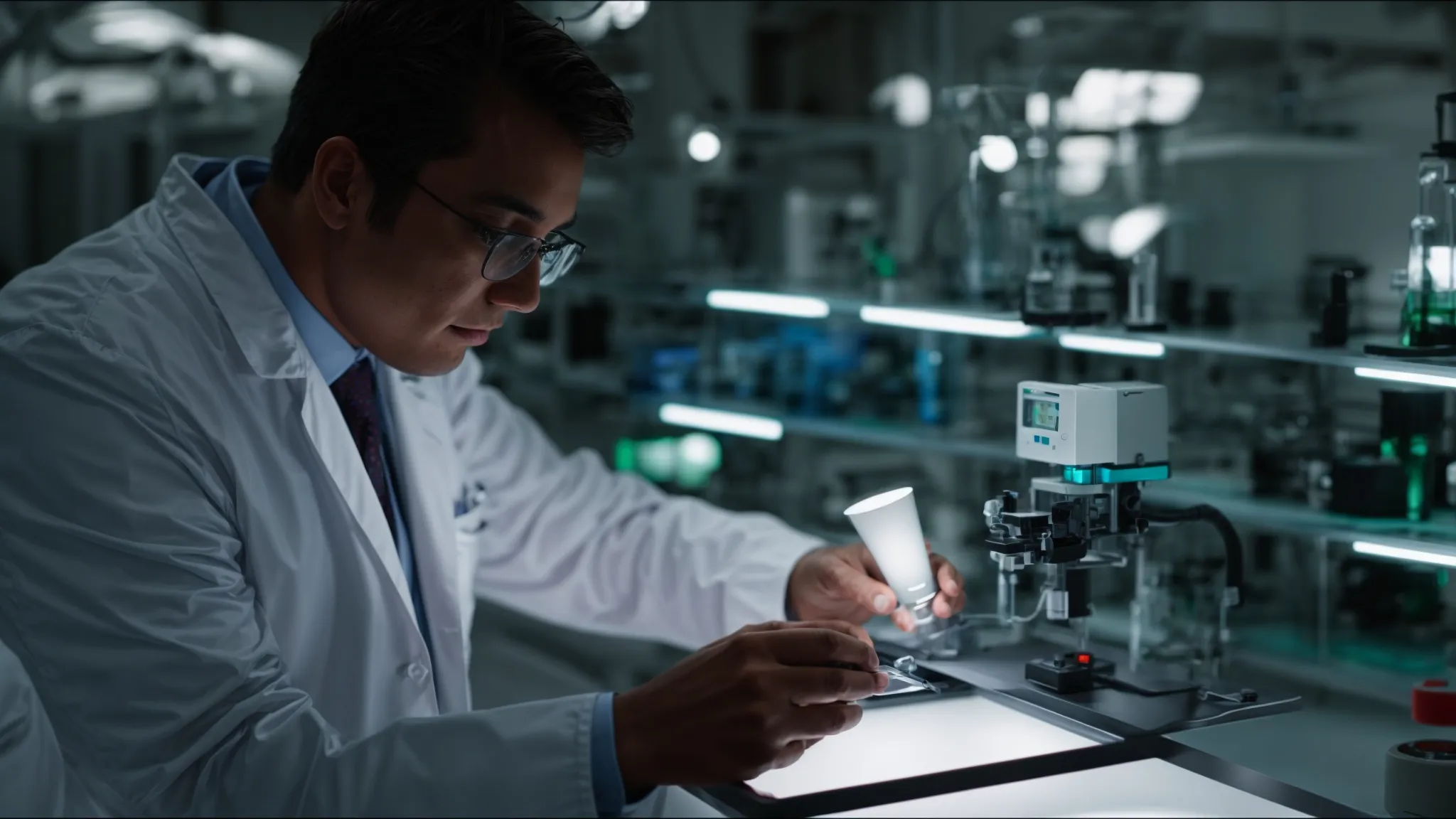
Amidst the burgeoning interest in the therapeutic properties of red light therapy, a wave of scientific scrutiny has surged within Australian research circles.
Local studies are unlocking insights into how this technology impacts concerns such as weight loss and skin rejuvenation, delving deep into the mechanisms at play within the visible spectrum of light.
Concurrently, Australian medical professionals are keenly observing and integrating findings from international research, ensuring that global advancements inform local practices and benefit Australian users.
Dermatologists across the country, particularly those specialising in post-surgery recovery and skin health, are contributing expert opinions to deepen the understanding of how different spectrums of light foster healing and regeneration.
Local Studies and Their Findings
Australian studies rigorously testing red light therapy devices contribute pivotal data relevant to modern dermatological practices. Research demonstrates that specific light wavelengths, distinct from those emitted by standard fluorescent lamps, bolster elastin production, which can notably diminish the presentation of pimples and aid in injury recovery. These studies, mindful of each participant's privacy policy, are propelling forward a deeper comprehension of the therapeutic benefits associated with the technology.
International Research Applicable to Australians
In the broader research environment, findings from meticulous international studies are shaping the adoption and optimisation of red light therapy for chronic pain management among Australians. These research efforts often include systematic reviews that sift through extensive clinical trials, providing compelling evidence for hormone modulation and cellular regeneration as key benefits. Particularly persuasive are studies emanating from space agencies, which have contributed significantly to the current understanding of light therapy's efficacy through their stringent zero-gravity experiments.
- Systematic reviews providing evidence for the role of red light therapy in hormone modulation and pain management
- Impact of space agency research adding credibility to the science of regeneration through red light exposure
- Adoption of international research findings within the Australian context, contributing to informed therapeutic practices
Expert Opinions From Australian Dermatologists
Australian dermatologists are increasingly recognising the benefits of red light therapy, particularly its ability to reduce inflammation without the risks associated with ultraviolet exposure. Their expert analyses often shed light on the non-invasive nature of this therapy, underscoring its appeal for patients recovering from plastic surgery, who are aiming to avoid the potential for burn and further tissue damage.
The science is clear: red light therapy stands as a beacon of hope for various health concerns. Let's shift our focus to a more practical concern — the cost of harnessing this innovative treatment at home.
Comparing Prices of Red Light Therapy Devices in Australia
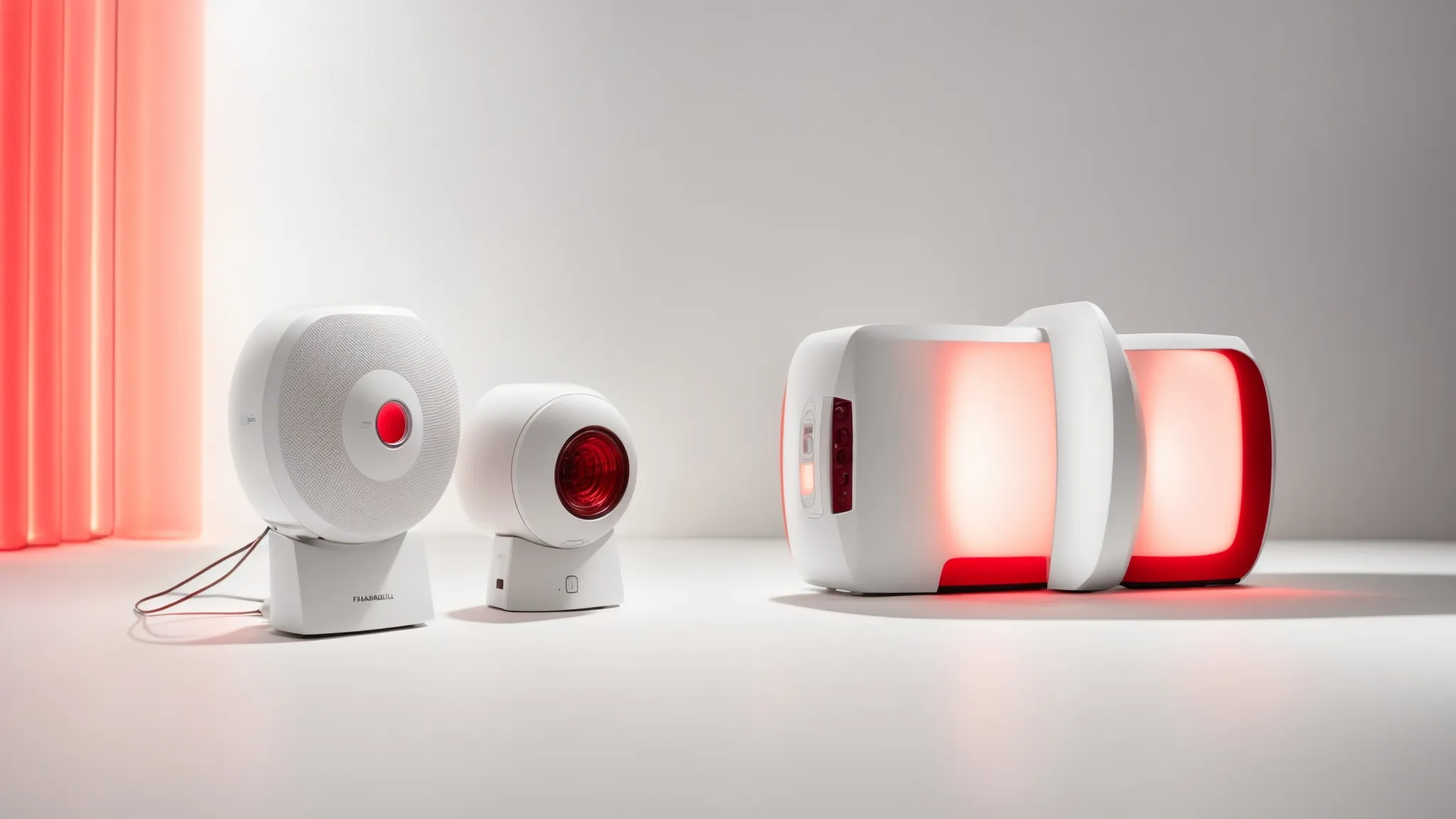
In the pursuit of health and rejuvenation through red light therapy, Australians are faced with a range of devices tailored to varying budgets and needs.
From entry-level models that cater to those dipping their toes into the benefits of redox biology to high-end systems offering full-bodied light treatments alongside added features like eye protection and compatibility with serums, there's a spectrum of options available.
Mask-like devices afford convenience and targeted treatment for facial care, while larger panels offer broader coverage.
Equally important to the consumer decision-making process is an analysis of cost-effectiveness, determining whether the initial expenditure aligns with the long-term value and outcomes delivered by the device.
Wise shoppers also seek out discounts and special offers, ensuring they secure the most effective light therapy solutions at the most advantageous prices.
Entry-Level vs. High-End Models
Entry-level red light therapy devices appeal to individuals experimenting with the treatment for the first time, offering a practical and cost-effective means to address issues such as rosacea. On the opposite end, high-end models, often reviewed by physicians and utilized in spas, provide a broader suite of features and stronger light intensity, purported to yield rapid and more pronounced results, although this claim remains a subject of investigation akin to distinguishing genuine effects from placebo.:
| Model | Features | Intensity | Usability | Price Range | Typical User |
|---|---|---|---|---|---|
| Entry-Level | Basic Functionality | Low to Moderate | Highly User-Friendly | Affordable | Home Users, First-Time Experimenters |
| High-End | Advanced Features, Physician Reviewed | High | Varied, Professional Training May Be Required | Premium | Spa Owners, Medical Practitioners |
Cost-Effectiveness Analysis
In medicine, the term "cost-effectiveness" is pivotal, particularly when assessing red light therapy devices that claim to aid wound healing and mitigate neck discomfort. A thorough evaluation includes analyzing how a device's price reflects its functionalities and service life, taking into account distinct features such as a built-in timer and adherence to terms of service agreements. Consumers must weigh the longevity and performance of each product against the expense to ensure they receive optimal value for their investment.
| Device Feature | Cost | Performance for Wound Healing | Neck Pain Relief | Timer Function | Longevity |
|---|---|---|---|---|---|
| Basic Device | $ | Standard Efficacy | Basic Relief | Not Available | 1-2 Years |
| Mid-Range Device | $$ | Enhanced Efficacy | Moderate Relief | Available | 2-3 Years |
| Premium Device | $$$ | Optimal Efficacy | Advanced Relief | Advanced Features | 3+ Years |
How to Find Discounts and Offers
In navigating the competitive field of red light therapy devices in Australia, savvy consumers utilise a variety of strategies to uncover discounts and offers. Regularly tracking the frequency of sales events and signing up for newsletters can lead to savings on devices that may assist with a range of diseases and skin conditions. Additionally, shoppers can take advantage of promotional bundles that may include complimentary items such as a USB charging cord or a compatible moisturizer, and keep an eye on targeted advertising that may offer exclusive discounts to certain consumer groups.
| Strategy | Description | Benefit | Additional Perks |
|---|---|---|---|
| Sales Events Tracking | Monitor for regular sales | Direct Discount on Devices | N/A |
| Newsletters | Sign up for brand updates | Early Access to Promotions | Exclusive Deals |
| Promotional Bundles | Purchase device with bonuses | Added Value to Purchase | USB Accessories, Skin Care Products |
| Targeted Advertising | Look for tailored ads offering discounts | Custom Discounts | Group-specific Offers |
With an array of choices and price points in the Australian market, the decision can seem staggering. Let's focus on distinguishing which device aligns perfectly with your personal health objectives.
How to Choose the Best Device for Your Needs
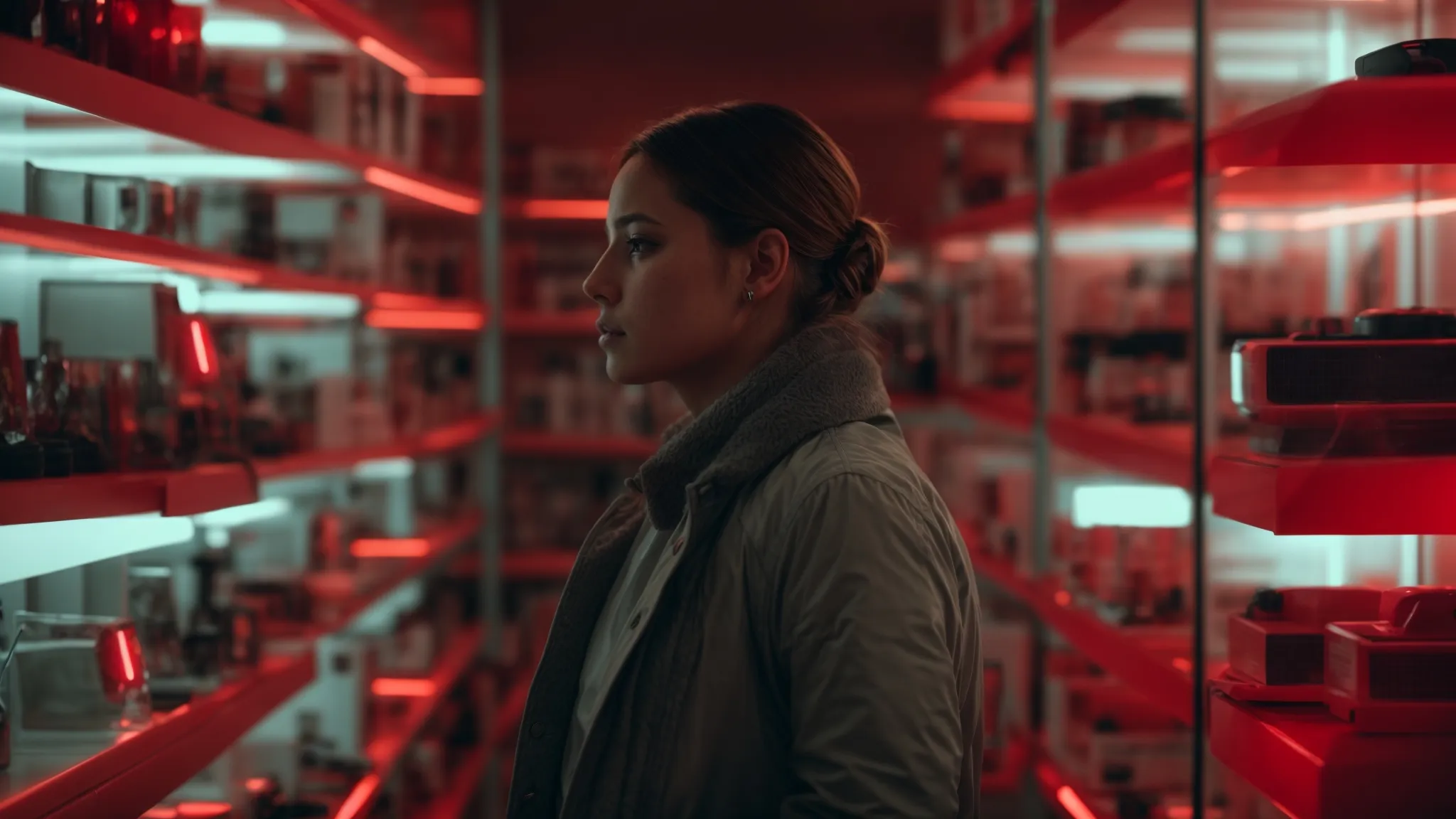
Embarking on the journey to integrate red light therapy into personal healthcare regimens requires careful consideration of an individual's unique needs.
Identifying specific treatment goals, whether it's seeking reprieve from the discomforts of carpal tunnel syndrome, or targeting skin conditions like dermatitis, directs the search to the most appropriate red light device, be it a wand for targeted therapy or a panel for broader coverage.
Within this framework, assessing one's budget constraints is equally important, ensuring that cost does not impede the procurement of a suitable solution.
Moreover, soliciting professional guidance can illuminate the compatibility of additional treatments, such as complementary lotions for enhanced skin therapy, ultimately aiding consumers in making informed decisions that align with their health aspirations and financial boundaries.
Identifying Your Treatment Goals
Identifying individual treatment goals is an essential first step for any Australian patient considering the investment in a red light therapy device. Those seeking to improve dermatology issues may require devices with wavelengths targeting skin health, whereas others hoping to stimulate blood circulation or alleviate pain may prioritize devices lauded for their efficacy in those areas. It is critical that patients align their health objectives with the specifications of the red light therapy devices to yield optimal outcomes.
- Match device specifications with personal health objectives in dermatology or pain relief.
- Seek devices that offer proven efficacy in stimulating blood circulation for specific conditions.
- Choose a therapy device that aligns with patient treatment goals for best outcomes.
Assessing Your Budget Constraints
When considering the purchase of a red light therapy device within Australia, budget constraints play a significant role in the selection process. A thorough evaluation of each model must account for upfront costs against the durability and expected lifespan of the device, factoring in essentials like irradiance levels, density of LEDs, and any additional accessories such as protective goggles. The presence of a solid warranty can also safeguard the investment, particularly in the context of beauty and healthcare applications where consistent performance is crucial.
| Cost Considerations | Irradiance and LED Density | Accessories Included | Warranty | Suitability for Beauty Treatments |
|---|---|---|---|---|
| Initial Investment | Measurement of light output and treatment efficacy | Goggles for eye protection, other items | Manufacturer guarantees | Device meets aesthetic treatment needs |
| Long-Term Value | Consistency and longevity of light emissions | Necessity and quality of extras | Terms covering device malfunctions or issues | Effectiveness in enhancing skin appearance over time |
Seeking Advice From Professionals
Professionals in the field of red light therapy serve as an invaluable resource when it comes to selecting a device. They can shed light on aspects critical for patient satisfaction, such as the effectiveness of a device when used in conjunction with topical treatments like salicylic acid for acne or to enhance water retention in dehydrated skin types. As skilled practitioners, their guidance ensures the chosen tool not only meets a patient's specific needs but also safely integrates into their existing routine, making their advice not merely helpful but often pivotal.
| Professional Role | Area of Expertise | Device Advice | Patient Satisfaction Focus | Product Synergy |
|---|---|---|---|---|
| Dermatologist | Skin Conditions | Wavelengths for Acne Treatment | Evidence-Based Outcomes | Compatibility with Salicylic Acid |
| Physiotherapist | Pain Management | High Irradiance for Deep Tissue | Improved Mobility | Adjunct to Manual Therapy |
| Dental Surgeon | Oral Mucositis | Targeted Therapy for Mouth | Reduction of Treatment Side Effects | N/A |
| Wellness Coach | Overall Well-being | Full Body Panels for Skin Hydration | Enhanced Relaxation and Stress Relief | Supports Water Balance in Body |
Selecting the ideal red light therapy device is just the beginning. Let's pivot to understanding the safety landscape and mitigating any potential side effects.
Potential Side Effects and How to Avoid Them
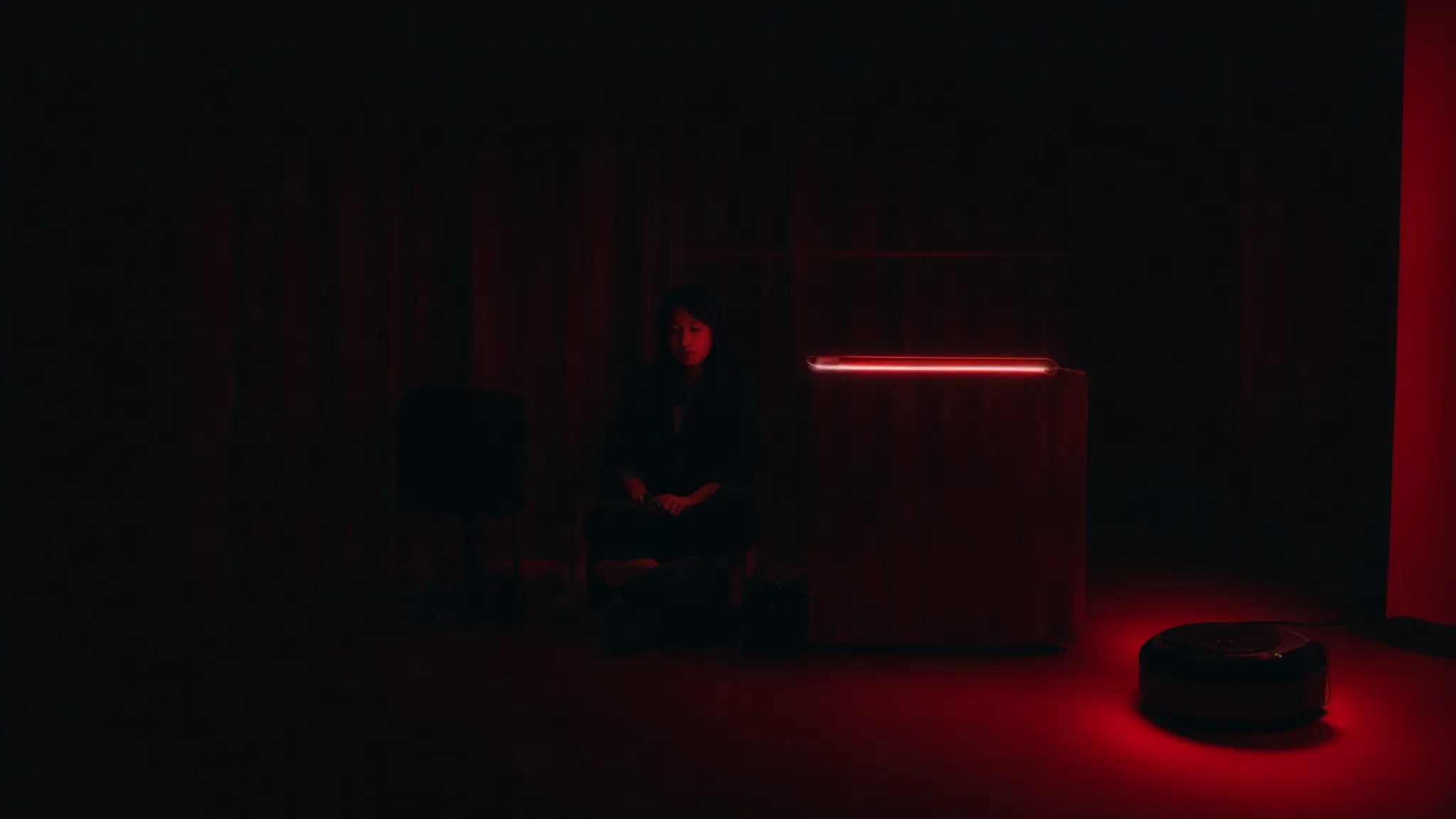
As Australians explore the benefits of red light therapy for enhancing dermal health, concerns naturally arise around the implications for conditions such as acne and the overall safety of repeated light exposure.
Red light therapy, designed to stimulate adenosine triphosphate production in the skin, has been widely adopted in health care regimes, drawing from success stories in the United States and beyond.
Yet, patients must be diligent in understanding the potential side effects that can accompany this therapy.
It is imperative that users adhere to precautionary measures and recognize the circumstances that warrant the advice of a medical professional to ensure the health benefits far outweigh any risks.
Common Concerns With Red Light Therapy
Concerns around red light therapy often center on its safety and efficacy, especially given the potential for adverse effects such as skin irritation or an unforeseen interaction with conditions like skin cancer. In clinical trials, while red light is being investigated for its role in photorejuvenation and its ability to work in conjunction with treatments such as massage, the focus remains on ensuring that it does not exacerbate existing skin issues. Medical professionals emphasize the need for continuous monitoring and research to uphold patient safety in light-based therapies.
Precautionary Measures to Take
To mitigate potential side effects associated with red light therapy devices, Australian users are advised to employ a multi-faceted approach to precautionary measures. Use of a mobile app to track session times can prevent overexposure, which may exacerbate certain skin conditions or encourage the proliferation of bacteria. People with myopia should be particularly cautious, ensuring appropriate eye protection during sessions. Additionally, verifying that a red light therapy device is covered under one's insurance policy can provide peace of mind and financial safeguarding against unforeseen complications.
| Measure | Type | Purpose | Relevance to Condition |
|---|---|---|---|
| Mobile App Tracking | Session Management | Prevent Overexposure | Skin Condition Management |
| Eye Protection | User Safety | Protect Vision | Myopia Consideration |
| Regular Cleaning | Device Maintenance | Inhibit Bacterial Growth | Skin Hygiene |
| Insurance Clarification | Financial Protection | Coverage for Therapy | Protection Against Complications |
When to Seek Professional Guidance
Professional guidance becomes crucial when considering treatments, such as photodynamic therapy, which may overlap with or enhance red light therapy protocols. Information disseminated through social media platforms, like TikTok, often oversimplifies complex treatments like those for melasma, leading to misconceptions. It's vital to consult a healthcare professional before following trends, as they can provide tailored advice and recommend reliable brands.
| Treatment Type | Recommended Action | Platforms of Concern | Condition | Brand Endorsements |
|---|---|---|---|---|
| Photodynamic Therapy | Seek Medical Advice | TikTok, Others | Melasma | Professional Recommendations |
Moving beyond the precautions, it's time to take action towards better health. Let's turn our attention to the premier destinations for red light therapy devices across Australia.
Where to Find Red Light Therapy Devices in Australia
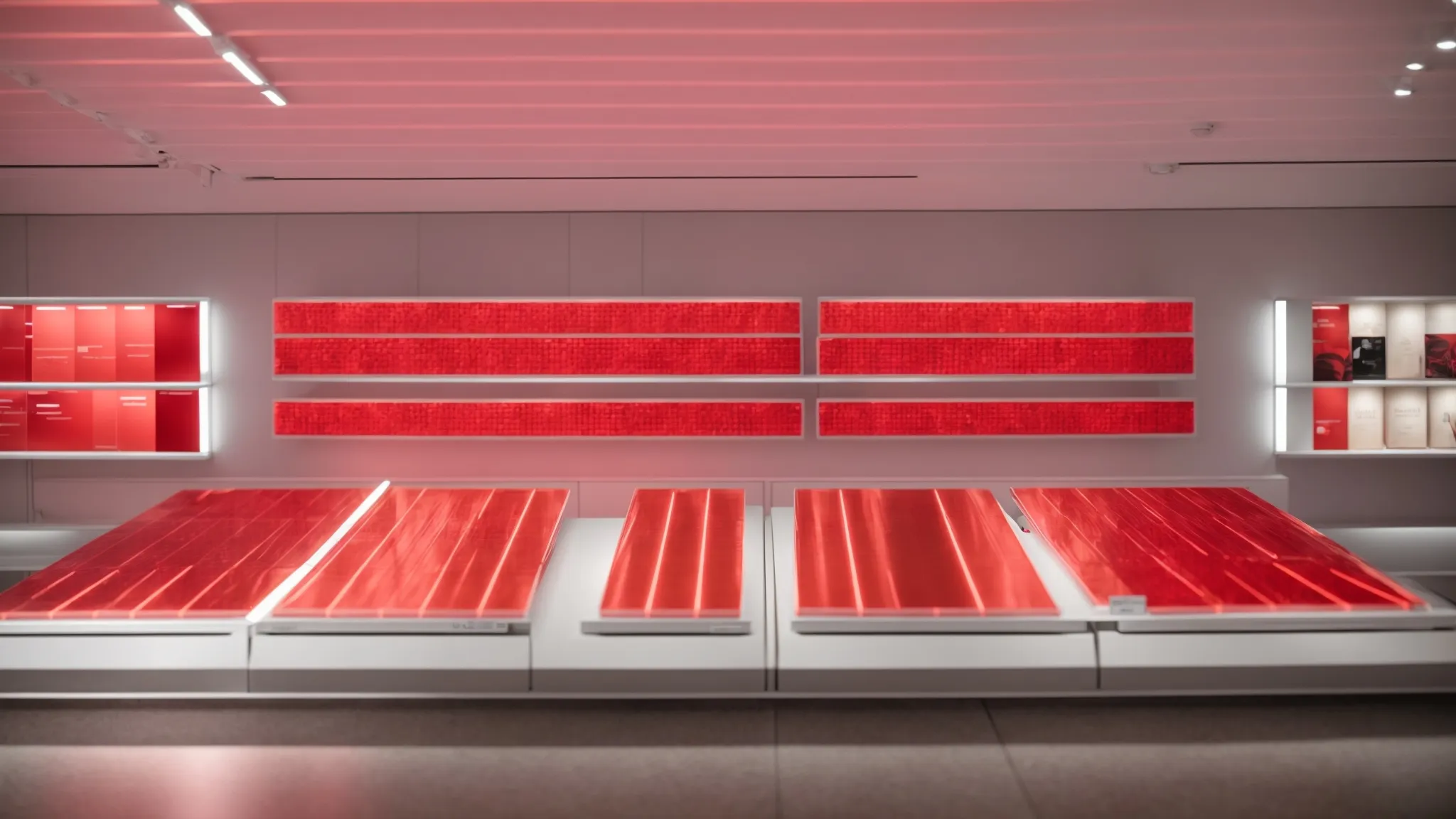
In Australia, individuals seeking relief from conditions such as pattern hair loss or wishing to minimise the chance of adverse effects have a wealth of options for acquiring red light therapy devices.
Between retail outlets and online stores, the landscape is rich with opportunities for consumers to gather data, evaluate feedback, and find a product that suits their needs.
For those not ready to invest upfront, rental services present an alternative path, allowing the benefits of a personal sauna-like experience before committing to a purchase.
Meanwhile, warranties and customer service offer layers of reassurance, ensuring that any device chosen comes with the necessary support to address concerns ranging from technical glitches to unexpected outcomes.
Retail Outlets and Online Stores
Within Australia's thriving market, retail outlets and online stores serve as primary conduits for procuring red light therapy devices, each boasting a broad array of selections aimed at enhancing cell metabolism and overall skin health. Ensuring consumer confidence, many retailers offer comprehensive FAQs to address common inquiries, while clinics often provide professional-grade equipment with robust privacy policies. This accessibility allows individuals to fully explore the benefits of red light therapy at their convenience and with informed understanding.
Rental Services vs. Purchase Options
In navigating the landscape of red light therapy solutions in Australia, the decision to rent or purchase can be influenced by several factors. Those focused on enhancing fibroblast activity for skin health, seeking expert advice for sleep improvement, or exploring adjunctive care for cancer may benefit from trial periods offered by rental services before committing to a purchase. Meanwhile, individuals certain of their long-term use and confident in the therapeutic benefits may opt for outright purchase to ensure consistent access to the treatment.:
- Individuals interested in long-term benefits, such as improved skin health by boosting fibroblast activity, often prefer purchasing devices.
- Those seeking professional advice on the efficacy of red light therapy for improving sleep or as complementary cancer care might initially choose rentals.
- Experts recommend rental services for Australians desiring a trial period to evaluate device effectiveness before committing to a full purchase.
Warranty and Customer Service Insights
For Australians vetting the longevity and reliability of red light therapy devices, warranty coverage and customer service excellence become vital touchstones. A comprehensive warranty that covers diode failure assures users that their investment is protected, mirroring the robust consumer protection standards seen in markets like New York City. Equally, responsive customer service teams provide swift, informed support, mitigating downtime and enhancing overall satisfaction with the product.
Transitioning from the availability of devices, we turn our gaze to the horizon. The future of red light therapy in Australia promises innovation and enhanced wellbeing.
The Future of Red Light Therapy in Australia
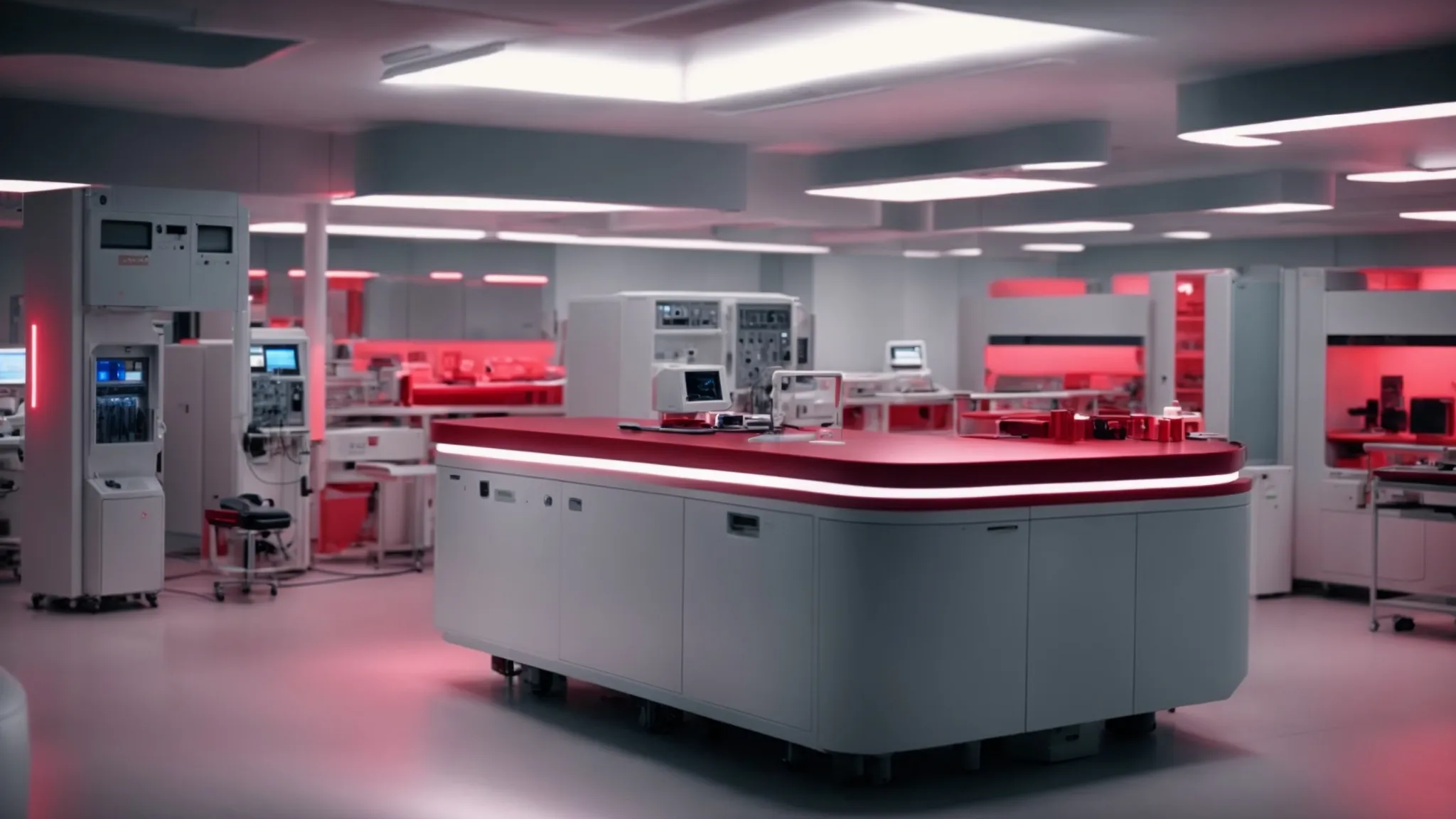
The horizon of red light therapy in Australia is continuously expanding as advancements in technology drive new possibilities in the healthcare and wellness sectors.
With a keen eye on the emerging trends shaping the industry, experts and consumers alike eagerly anticipate the unveiling of innovative devices and novel applications of this non-invasive treatment modality.
Pinpointing potential areas of breakthrough, Australian professionals delve into research that promises to broaden the scope of conditions treatable by red light therapy.
As the years progress, prognostications by leading experts offer insights into how red light therapy will continue to evolve, influencing therapeutic approaches and lifestyle choices of health-conscious Australians.
Emerging Trends in the Industry
The landscape of red light therapy in Australia is shifting towards personalised medicine, with devices becoming increasingly sophisticated in their ability to tailor treatment parameters to individual patients. Innovations in wearables and home-use equipment are expanding accessibility, allowing for a more nuanced and conveninent approach to self-administered therapy. As the market evolves, these trends are set to redefine the relationship between technology and wellness, offering more customised solutions that align with the varied lifestyles and health requirements of Australians.
Potential New Applications and Devices
As Australian innovators collaborate with global technology leaders, the red light therapy sector anticipates the advent of smarter devices that seamlessly integrate with digital health platforms, bridging the gap between at-home therapy and professional healthcare monitoring. These novel devices, characterised by enhanced precision and programmability, are poised to open up treatment possibilities for a broader array of medical conditions, signalling a significant stride forward in personalised healthcare solutions.
Experts’ Predictions for the Coming Years
Leading-edge professionals anticipate that red light therapy will see notable advancements in the integration of AI and machine learning, empowering devices to adapt treatments in real-time based on user feedback and physiological responses. This bespoke approach is expected to elevate the efficacy of therapies, offering patients across Australia tailored solutions for their health concerns and optimizing outcomes in both cosmetic and medical applications. The forward trajectory in red technology predicts a shift towards more proactive and predictive models of wellness care.
Conclusion
Evaluating red light therapy devices across Australia is vital due to the diverse health and cosmetic benefits they offer.
It ensures consumers can make informed decisions based on device efficacy, safety certifications, and alignment with personal health goals.
Comparison across a range of device types and price points enables Australians to find cost-effective solutions without compromising on quality.
Professional guidance furthers the safe integration of these therapies into individual healthcare routines, enhancing overall well-being.








